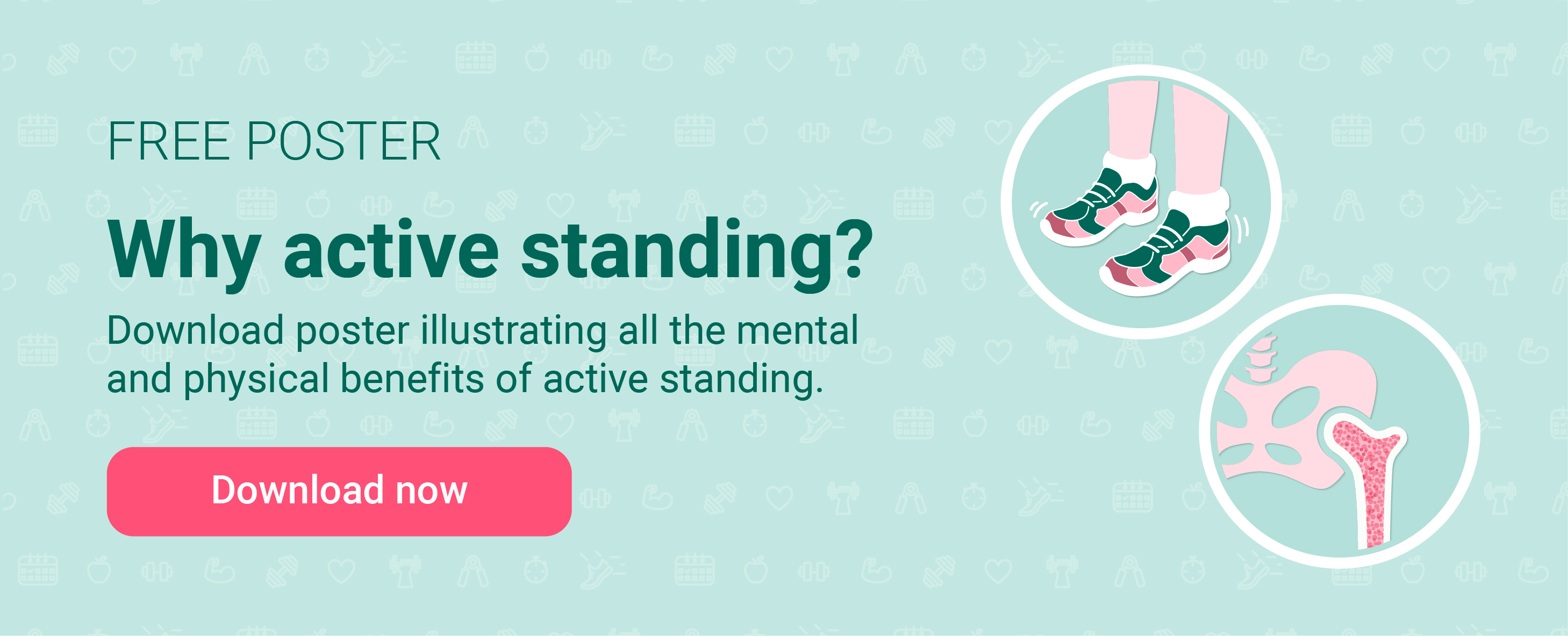/meet%20stefanie.png?width=640&height=334&name=meet%20stefanie.png)
Mar 20, 2019[Video] Fighting her way back up– how Stefanie recovers from TBI using the Innowalk

Back to Blog Overview
Robbed of her ability to move and communicate, Stefanie (31) was faced with a daunting prospect: having to overcome traumatic brain injury (TBI). Her parents were overwhelmed when she took her first steps – thanks in large parts to the Innowalk.
Stefanie is a young woman who lives in the southern part of The Netherlands. She used to work as an office manager in a film production company in Amsterdam, and lived an active, urban life.
Two years ago, a traffic accident dramatically turned Stefanie’s life upside down. She suffered a major head injury and was hospitalised.
The first four months involved a range of complicated surgeries. As soon as she was deemed medically stable, she was transferred to a rehabilitation centre.
Going home
At this point Stefanie was dependent on tube-feeding. She had regained some words, but was unable to articulate sentences. In terms of mobility, she was mainly confined to a lying position in her bed, and able to sit only in a reclining wheelchair. A distinct neglect of her left side became apparent, and a hoist was required for every transfer.
After some months at the rehabiltations centre without significant progression, Stefanie’s parents decided to bring her home, into an apartment of her own, close to where they lived.
Together with three physiotherapists, a speech therapist, a nurse and family members, a 24-hour-care was scheduled, and a rehabilitation program created by Dr. Henk Eilander, tailored to Stefanie, was enforced.
The first goal was to reclaim an important, lost territory: independent eating and drinking. Within a week, due to devoted training and support, Stefanie was eating and drinking with supervision. Everybody also put a lot of effort into stimulating the left side of the body.
Getting back up with The Innowalk
Stefanie’s physiotherapist stumbled over the Innowalk on the Internet, and together with the parents swiftly organized a trial period. Soon, Stefanie was positioned in the Innowalk, and found herself standing upright for the first time after the accident – two months after returning home
A two-week trial was enough: They were convinced they had found what they needed for the next rehabilitation level.
An intensive period of varied training followed: dynamic standing in the Innowalk, bicycling while sitting, active standing in a static stander, bimanual training of the arms in daily activities and training in the pool.
Read more: [Video] Samuel Is Paralyzed, but the Innowalk Keeps Him Going
First steps
Over the course of a six-month training regime, Stefanie showed incredible improvements of motor function and communication. And sure enough, one day,
SHE TOOK HER FIRST STEPS!
Completely overwhelming everyone involved, Stefanie was standing up, safely supported by her parents on each side, and stepping forward!
We’re sure the Innowalk has played an important role in getting Stefanie back on her feet,
– Stefanie’s mother says.
It’s all about the attitude
Adding to the complexity, Stefanie has had diabetes type 1 since she was four years old. It had been difficult to regulate even prior to the accident – today she is totally dependent on around-the-clock assistance for controlling the blood glucose level.
Considering these circumstances, it is no mystery why Stefanie’s recovery has been highly encouraging to everyone around her. Thankfully she enjoys training, and her parents credits her positive approach as a crucial factor in their rehabilitation success.
It has made Stefanie’s family and therapists firm believers of creativity and the right attitude; they have seen firsthand how it can manifest in progress against the odds.
As Stefanie is finally back on her feet, standing and walking has gradually become part of her transfer routines. The hoist has been made redundant.
Benefits of the Innowalk
The parents and therapists speak enthusiastically about the Innowalk, and are convinced the device has played an important role in getting Stefanie back on her feet. They quickly realized Stefanie enjoyed moving in the Innowalk, and noticed her words flowing more easily while walking. Somehow, moving seemed to unshackle her speech.
The arm handles were taken into use from day 1. At first, she needed external support for the left hand to grip, but after a few weeks she literally put matters into her own hands, using the right hand to position the left hand. Her upper body stability has improved, as well as the strength in her legs.
Read more: Wenche Was Locked Inside Her Body at 39 – This Is Her Journey Towards a Better Life
The device made it possible for them to position her in a standing, moving position – at the time their only viable alternative for stimulating her with weight bearing standing.
We’re sure the Innowalk has played an important role in getting Stefanie back on her feet.
– Stefanie’s mother
Today
Just shy of two years after the accident, Stefanie is walking with the support of one person on even surface. She has gained enough control that she can sit unsupported on a bench, and can even maintain her balance while throwing a ball.
She communicates with longer and longer sentences and her left side is increasingly being used in more activities.
Stefanie has lost her short-term-memory, something that’s proving a challenge in daily life. It makes her dependent on support 24/7, but she and her family are hoping it will catch up with all the other areas that have improved so tremendously since the accident.
Facts about Traumatic Brain Injury (TBI)
- Caused by an acute external force
- The Glasgow Coma Score (GCS) is 15-point test used to grade a patient’s level of consciousness, and is used to classify an injury as mild, moderate or severe
- Mild TBI usually requires rest and medication to relieve headache
- Moderate to severe TBI requires intensive care in a hospital
- Falls is the most frequent cause of TBI followed by road traffic accidents
- In rehabilitation after TBI the goals are to:
• Stabilize the medical and rehabilitation issues related to the TBI and other injuries.
• Prevent secondary complications (pressure sores, pneumonia and contractures etc.)
• Restore lost functional abilities like sitting, standing, walking, perform activities of daily living, swallowing, communication etc.
- Research has shown that early mobilisation after TBI might lead to shortened length of hospital stay, better functional outcomes and less contractures

Rikke Damkjær Moen brings many years of experience as clinical physiotherapist to the Made for Movement team. Her mission is to ensure that everybody, regardless of mobility problems, should be able to experience the joy and health benefits of physical activity. As our Medical Manager, Rikke is passionate about sharing knowledge so that individuals with special needs, families, and clinicians can discover the possibilities and solutions provided by Made for Movement.


